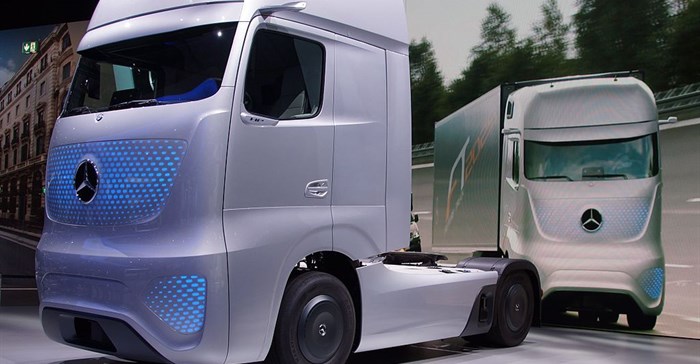






There is no doubt that South African transport operators are a tough breed. One just has to look at the challenges facing the industry in South Africa to realise that starting and developing a sustainable transport business requires a special kind of businessperson - one who is more prepared than most to tackle issues that can arise on virtually a daily basis and test entrepreneurial skills to the limit.
For the foreseeable future, our economy will remain heavily reliant on trucks for the transport of goods; unlike more developed countries which would favour rail. As a result of the dependence on a single transport sector such as road, the use of our roads leads to increased maintenance and repair costs on both the vehicles themselves, as well as the road infrastructure. This, in turn, places more pressure on an already strained local economy.
So, let’s rather talk about possible future technologies and their impact on how truckers could do business in 2016 and beyond. Recent trade journals and internet articles reveal that trucks are far from being the poor cousins as far as technological innovation is concerned.
The field of safety is of major concern to anyone who operates a logistics fleet or drives a heavy vehicle. An article in Forbes Magazine (June 2015) covered developments at Samsung, referring to a 'transparent truck' which could make the world’s roads much safer for all. Not transparent in the real sense of the word, the Samsung Safety Truck uses camera technology to accomplish its aim.
The test truck is equipped with a front-facing camera which constantly streams video onto the back doors of a rig. Drivers tucked in behind the vehicle with obstructed views of the road ahead are, therefore, aware at all times of what is approaching. Overtaking becomes easier and much safer.
Imagine the boon for local motorists. Seeing what the truck driver sees means that the average driver will be able to view situations that could force the truck to brake suddenly. From a South African landscape view, cattle and animals crossing the road, for example, will literally pop up on the screen, making following drivers aware of these potential hazards before they even enter the road. The truck which underwent tests in Argentina is still in the development stages.
Then, of course, there is the ‘driverless truck’. A prototype unveiled at the International Commercial Vehicles Show in Germany in 2014. The Daimler product has a sleek front, with headlights that are replaced by an array of LED cells, which help make the Future Truck 2025 as jaw-dropping as one’s first sight of an Italian supercar going through its paces.
Technologies in the truck result in lower fuel consumption, emissions and navigation through a Highway Pilot system using cameras and radar sensors. This not only allows traffic control systems to see exactly where the vehicle is and to monitor it but also lets other drivers ‘see’ it on the road. For the old-fashioned driver who prefers to be in control, blind spot technology will help with advice on when to change lanes safely. It will also warn the driver about obstacles on the road ahead.
• Horses powered by a micro turbine-electric hybrid drive system pulling trailers made of carbon fibre.
• Self-parking rigs that are capable of parallel parking themselves. This technology has been demonstrated in Germany where a reversing horse uses a fifth wheel to push the nose of the semi-trailer left or right, moving its rear end in an opposite direction, causing the front of the drawbar to swing slightly and thus steer the trailer.
Add these stunning innovations to the already burgeoning market for devices that enable owners to track their vehicles, check the driving habits of drivers and make sure routes are adhered to, and you could have a future in which all these functions are fully automated and the driver could become a passenger whose function is to monitor systems and refuel the vehicle.
Ultimately, however, this future is still some time away. Better scheduled, lighter trucks placing less stress on road surfaces, enabling traditional challenges of road safety to be automatically addressed, and even reducing emissions to reduce the levels of greenhouse gases in the air, are well under way but we may still have to wait a few years before we see their implementation.
When these vehicles do eventually make an appearance on our roads, trucking Nirvana will undoubtedly be the result, helping South Africans to move forward.